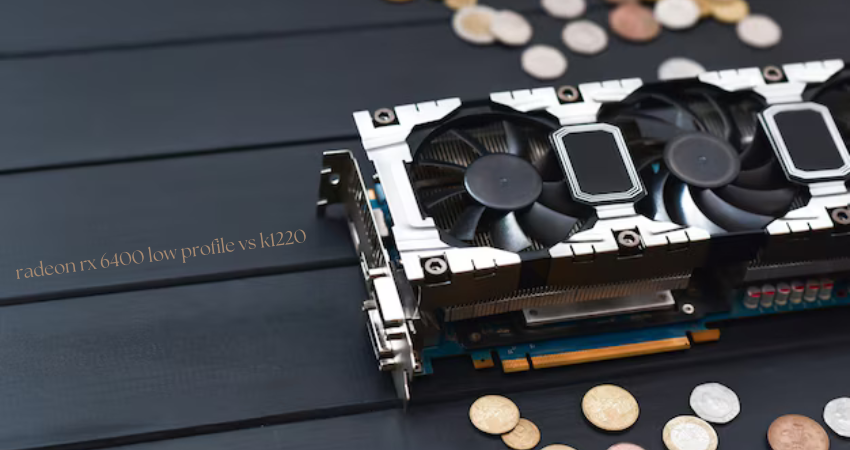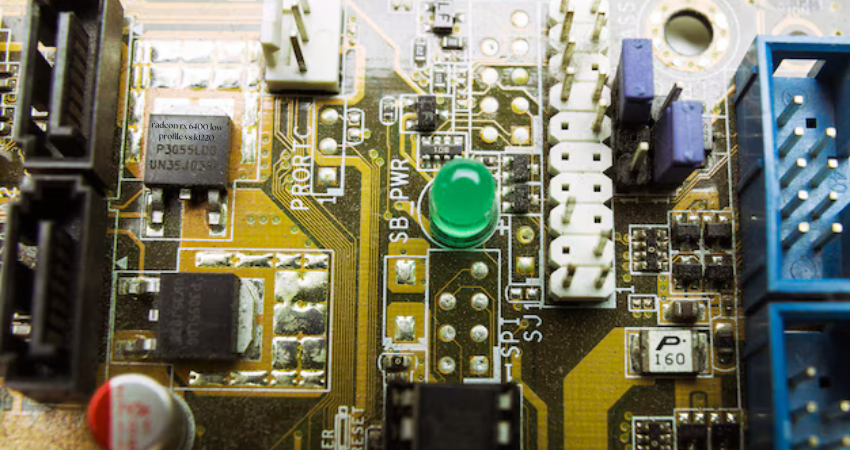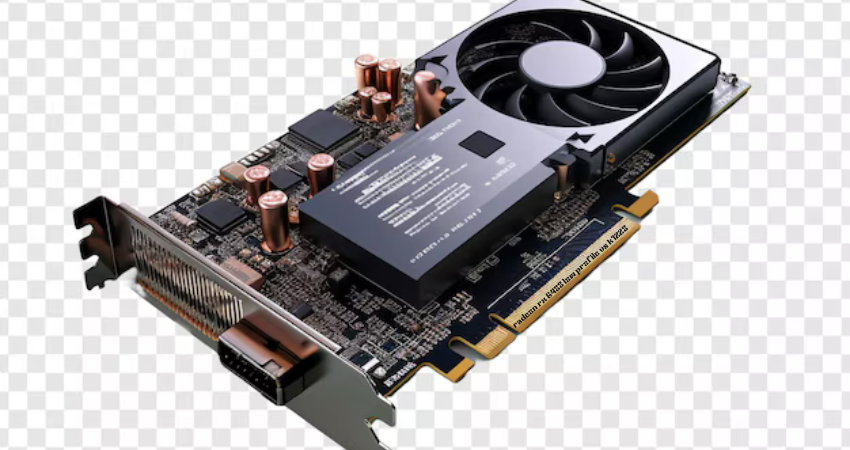In a world where pixels breathe life into dreams, and frames sculpt the soul of digital art, the Radeon RX 6400 Low Profile takes the stage like a symphony in miniature. Its compact form whispers promises of untamed power, a silent crusader built on radeon rx 6400 low profile vs k1220 architecture. Beneath its diminutive stature lies a heart roaring with 768 stream processors, a memory clock that dances gracefully at 16 Gbps, and 4 GB of GDDR6 memory—a portal to immersive gaming universes.
But where the RX 6400 strides with bold ambition, the K1220 lingers like an old melody, reliable and timeless. Built for stability and simplicity, the K1220 embraces its Quadro lineage with Nvidia’s heritage of precision. Designed with professionals in mind, it’s a workhorse tailored for CAD applications, 3D modeling, and workflows where steadiness triumphs over speed.
Gaming: The Battle for Frames
For the gamer, the radeon rx 6400 low profile vs k1220 becomes a trusty blade, sharp and swift. Its ability to render AAA titles at 1080p at playable framerates paints it as a valiant warrior in its price range. Whether you roam the lush forests of The Witcher or dive into the chaos of Cyberpunk 2077, this GPU ensures you’re not left behind in the dust of sluggish performance.
In contrast, the K1220 humbly steps back, its focus lying not in gaming but in sculpting architectural wonders and engineering blueprints.
Efficiency: A Dance with Power
Energy, the lifeblood of any system, finds a wise steward in the RX 6400 Low Profile. With a TDP of just 53W, it sips power like a connoisseur enjoying fine wine, while the K1220’s 45W TDP whispers its own efficiency story. Yet, the RX 6400 edges ahead, offering more performance per watt—a fine balance of muscle and mindfulness.

Design: Elegance Meets Purpose
The RX 6400 Low Profile is an ode to compact artistry, fitting snugly into the smallest cases without compromising functionality. Its low-profile design is perfect for minimalist builds and HTPCs, where space is scarce but aspirations run high. The K1220, on the other hand, stands resolute with its utilitarian design, prioritizing substance over flair, a constant companion for those chasing perfection in their craft.
The Call of the Radeon RX 6400 Low Profile
Oh, the RX 6400 Low Profile, a whisper of power cloaked in an elegant form. Built on AMD’s RDNA 2 architecture, it sings the song of modernity—a compact yet potent symphony. With 4 GB of GDDR6 memory and a TDP of just 53 watts, it dances effortlessly between form and function.
This card is not just a GPU; it is an enabler of journeys. It invites gamers to explore mythical realms, to dive headfirst into worlds rich with storytelling and wonder. It holds within its circuitry the promise of smooth framerates at 1080p, offering a gateway to immersive adventures without consuming the soul of a power supply.
The Resolve of the K1220
And then, there is the K1220—a sentinel of precision, rooted in Nvidia’s Quadro lineage. It does not chase thrills or glory in the arena of games but stands firm in the sanctity of its purpose. Architects, engineers, and creators of complex designs find solace in its stability.
With a focus on reliability over raw speed, the K1220 becomes a tool of craftsmanship. It carves intricate models and powers CAD software with a quiet determination. While its gaming prowess pales next to its counterpart, it compensates with an unyielding dedication to workflows where accuracy reigns supreme.
Gaming vs. Creation: A Tale of Two Worlds
Picture this: the RX 6400 Low Profile as a sprinter, agile and swift, made for quick bursts of adrenaline. Its architecture is optimized for modern games, delivering performance that transforms pixels into experiences. Gamers who crave accessible power find their muse here, as it turns every click into a story, every battle into a saga.
The K1220, by contrast, is a sculptor—its every move deliberate. It does not race through fantastical forests or light up the skies of virtual cities but rather chisels designs, layers upon layers of complexity. It is a companion for those whose playground is reality itself, translated into digital blueprints.
Energy and Efficiency: A Balanced Equation
Both cards respect the earth’s rhythms, consuming power with care. The RX 6400 Low Profile sips at just 53 watts, a feat of engineering that matches its ambition with sustainability. The K1220 is no glutton either, demanding a modest 45 watts, reflecting Nvidia’s knack for efficiency in the realm of workstations.
Yet, it is the RX 6400 that sings a sweeter tune for those seeking to balance energy with performance. A beacon for minimalist builds, it brings might to small cases without overwhelming the system’s ecosystem.
Design Philosophy: Elegance vs. Pragmatism
Here lies a fascinating divergence. The RX 6400 Low Profile is a celebration of modernity, its sleek, compact frame an ode to minimalism. It fits seamlessly into small form-factor cases, whispering sophistication with every millimeter.
The K1220, on the other hand, carries a functional aesthetic. It is not here to impress with its looks but to inspire confidence with its stability. In its sturdy design, professionals find reassurance—a silent promise that it will endure, no matter the challenge.

Conclusion: Two Titans, Two Destinies
In this saga, there are no victors, only pathways. The radeon rx 6400 low profile vs k1220 Profile is the spark of passion, a champion of gaming and multitasking for the everyday user. The K1220, in its steadfast nature, is a sculptor’s tool, a professional’s ally in bringing visions to life.
Each GPU speaks to different souls, one chasing adrenaline, the other seeking clarity. And in their dance of power and precision, we find the beauty of choice—proof that the heart of technology beats not in what it does but in how it serves.
FAQs
What makes the RX 6400 Low Profile ideal for gaming?
Its compact design and RDNA 2 architecture ensure high performance at 1080p with energy efficiency.
Is the K1220 suitable for modern games?
While not designed for gaming, it can handle older titles or low-demand games decently.
Which GPU offers better energy efficiency?
Both are efficient, but the RX 6400 excels in providing more performance per watt.
How does size impact performance in these GPUs?
The RX 6400’s low-profile form factor makes it ideal for compact builds, while the K1220’s design caters to workstation stability.
Which GPU should I choose for everyday use?
The RX 6400 suits casual gamers and multitaskers, while the K1220 is better for professionals needing precision.


